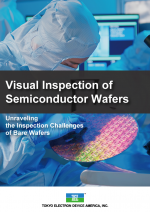- HOME
- News & Event
- News
- 【Spotlight】Revolutionizing AI Chips CPO (Co-Packaged Optics) Explained
News & Event
News
2025/03/18
Column
【Spotlight】Revolutionizing AI Chips CPO (Co-Packaged Optics) Explained
Among advanced semiconductor technologies, 3D integration plays a crucial role in shaping the future performance of semiconductors alongside miniaturization. This article explains CPO (Co-Packaged Optics), a key component of 3D integration.
What is CPO (Co-Packaged Optics)?
CPO (Co-Packaged Optics) is a technology that integrates optical components and semiconductor chips (e.g., CPUs, ASICs) into the same package. By using light instead of electrons for data transmission, CPO improves data transfer speeds and reduces power consumption in environments such as data centers and high-performance computing.
Traditional Setup vs. CPO
In conventional systems, optical components for converting electrical signals to optical signals were placed far from the semiconductor chips. However, as data transfer speeds increased, this separation became a bottleneck, causing higher power consumption and latency. CPO addresses these issues by placing optical modulators and optical detectors near semiconductor chips, minimizing the distance and time required for signal conversion.
Comparison Diagram: Traditional vs. CPO Setup
- Pluggable Optics (Traditional Method)
- Optical components are separate from the semiconductor package.
- Increased latency and power consumption due to longer signal paths.
- Co-Packaged Optics (CPO)
- Optical and semiconductor components are integrated within the same package.
- Reduced latency and higher efficiency for data transmission.
comparing traditional pluggable optics to CPO
Pluggable Optics

Co-Packaged Optics

Background of CPO Adoption
CPO is currently gaining traction, particularly in data centers, due to the following factors:
- Rising Data Volume
Modern data centers and cloud computing environments handle rapidly increasing data volumes, requiring faster data transfer speeds and wider bandwidth. CPO supports these demands.
- Power Consumption
As data transfer speeds increase, power consumption rises, especially for long-distance transfers. CPO reduces power consumption by shortening the distance for electrical-to-optical signal conversion.
- Scalability and Performance
Traditional optical connection methods face efficiency issues as data speeds increase. CPO optimizes the conversion process, offering greater scalability and performance.
- Reduced Footprint
By integrating optical components into semiconductor packages, CPO minimizes the overall physical space required, an essential benefit for space-constrained environments like data centers.
- Advancements in Technology
Improvements in semiconductor manufacturing and optical technologies have made advanced solutions like CPO feasible.
Due to these factors, CPO is becoming widely adopted in data centers, network infrastructure, and high-performance computing applications.
Challenges and Future Prospects of CPO
Challenges
- Heat Generation:
- Integrating optical components within the same package as electronic chips can lead to thermal issues.
- Complex Manufacturing Processes:
- The integration of optical and semiconductor components requires advanced manufacturing technologies, increasing process complexity.
- Standardization:
- The lack of standardized processes and designs for CPO may hinder widespread adoption.
Future Prospects
As AI and next-generation communication technologies proliferate, data transmission volumes are expected to grow exponentially. However, conventional communication methods may lead to unsustainable increases in power consumption.
- Expanding Optical Communication:
- Previously used for long-distance communications (e.g., over 10 km), optical technology is now expanding to shorter distances within data centers (e.g., 500 m).
- Future advancements aim to enable low-power, high-speed optical communication for board-to-board (50 cm) and chip-to-chip (5 cm) distances.
- Emerging Research:
- The integration of silicon photonics chips, which combine optical and electronic components directly, is being explored as the next step in 3D packaging.
Despite its challenges, CPO is a promising solution for addressing the growing demands for high bandwidth and energy efficiency in next-generation data centers and network infrastructure.
Glossary
- Optical Modulator: A device that modifies the properties of light (e.g., intensity, phase, or polarization) to encode information based on electrical signals.
- Optical Detector: A device that converts incoming light signals into electrical signals for further processing.
- Silicon Photonics: A technology that integrates optical components onto a silicon substrate using semiconductor fabrication techniques. It enables light generation, modulation, detection, and propagation on a single chip.



 Contact Us
Contact Us
 Download documents
Download documents
 Member services
Member services